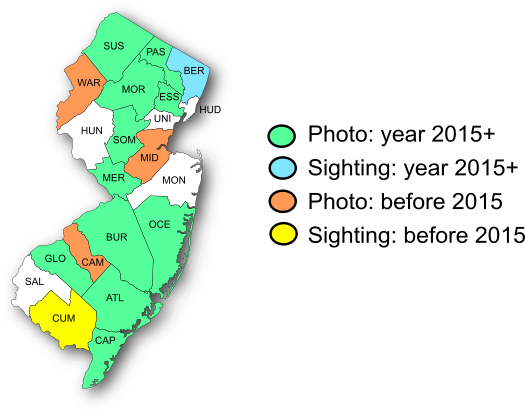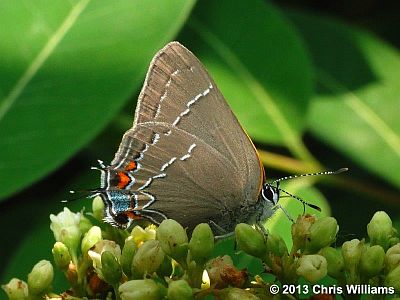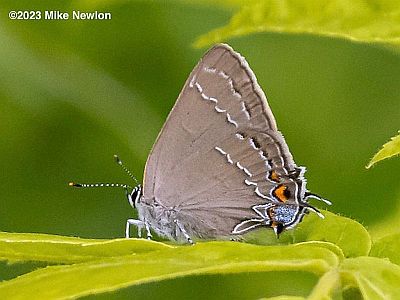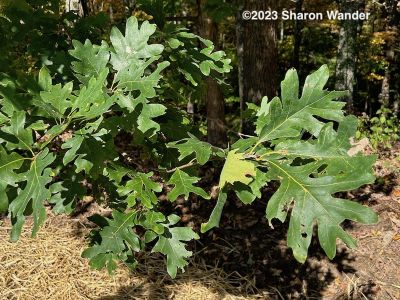New Jersey Butterfly Club
A chapter of the North American Butterfly Association (NABA)
Oak Hairstreak
Satyrium favonius
Identification: Very small—size of thumbnail. Almost never seen with wings open. Below: FW and HW gray-brown with narrow, black-and-white postmedian bands that on HW form an "M" near the tails. Orange spot near tails does not touch the "M" mark. Similar hairstreaks: White M Hairstreak is grayer below, has a small white dot near leading edge of HW (usually missing in Oak), has a larger orange spot that touches the "M" and is brilliant blue above (visible in flight). Gray Hairstreak is pearl gray below (but may appear brown when heavily worn), the postmedian bands include orange, the orange spot at HW tails is larger and squarish and usually has a thin black line across the inner side.
NJ Status and Distribution: Classified as Special Concern in NJ. Resident. Widespread but generally rare. More frequently reported from southern counties. Most reports are of single individuals.

Habitat: Forest edges and openings with host plants.
Flight Period: Mid-June to mid-July. Extreme dates: North Jersey 6/4—7/16; South Jersey 6/1—6/26.
Caterpillar Food Plants: Oaks (Quercus spp.) in the White Oak group.
Overwintering Stage: Egg.
Good Locations: Ramapo Mountain SF, Greenwood Forest WMA, Collier’s Mills WMA.
Comments: Even active field observers fail to find this goodie most years. Any observations (preferably documented with photos) of this rare butterfly should be submitted to the New Jersey Butterfly Club Recent Sightings page.


